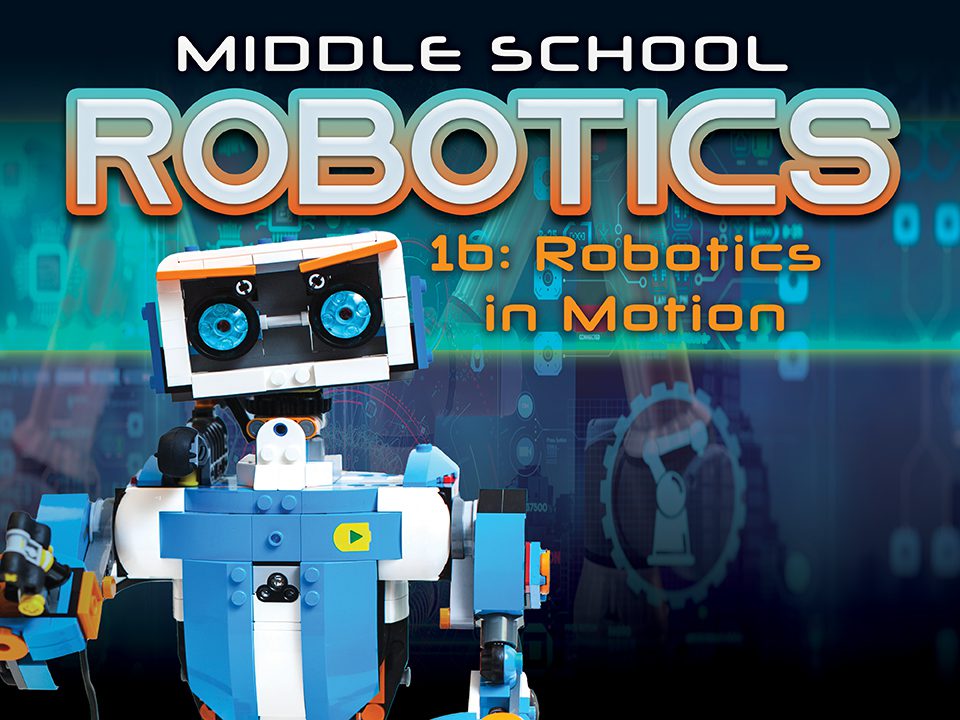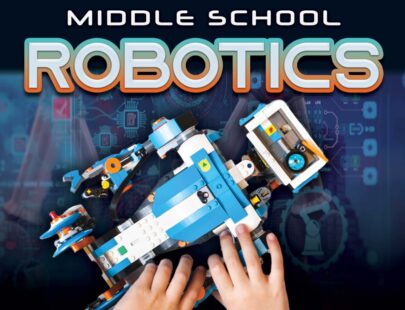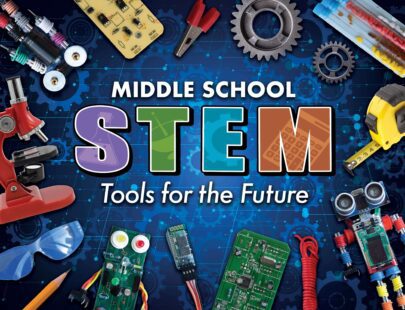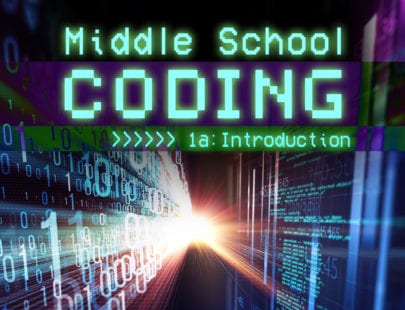
Middle School Robotics 1b: Robots in Motion
Let’s build a robot! Ever wonder how robots came to be and how they evolved over time? Is their impact on society good, bad, or somewhere in between? You will explore these topics and more. You will study a robot’s anatomy to understand what each part does, so you can better understand how the system works as a whole, and this knowledge will fire up your imagination to design your own robot. You will also learn a little about programming so that you can communicate with the robot. Let’s get started bringing your robot to life!
Units at a Glance
Welcome to Robotics
Welcome to the fascinating captivating world of robotics! Soon, we will discover the components that bring robots to life. We will also explore the remarkable history and evolution of robots and discover the ways they are transforming our world. In addition, we will explore questions about the moral values, or ethics, which come along with the rise of robotics and the exciting opportunities and challenges they present.
How Does a Robot Work?
In this unit, we explore robotics, systems thinking, creativity, and safety. From structures and drivetrains to tools and equipment, you will gain practical skills while thinking about how robots work.
All About Sensors
Robots use sensors to take in all kinds of data—optical sensors to see the unseen, pressure sensors which can feel the slightest touch, and temperature sensors which monitor the environment. How do these sensors work? What capabilities do they provide modern robots? We’ll answer these questions and more as we explore various sensor technologies.
Do You Speak My Language?
Let’s dive into the exciting world of robotics programming. In this unit, we will discover how robots think, make decisions, and carry out tasks through the magic of coding. In addition, we’ll discuss coding from the point of view of algorithms, control structures, and design. This unit blends creativity, problem-solving, and technological innovation to show how humans communicate with robots.
What Can My Robot Do?
Let’s explore the connection between the systems that bring your robot to life. We will look at how we might modify these systems to create robots that can do more things better and faster. Then, we’ll journey from the drawing board to the real world as we discover the power of two-dimensional and three-dimensional representations in robot design. Finally, we’ll talk about requirements, trade-offs, and decision-making, the critical factors that separate good robots from great ones.
Robots and the World’s Needs
How do creativity and technology drive innovation? How do problem-solving and decision-making shape the development of new robotic systems? We’ll look at the impacts of robotics as well as the challenges and opportunities they present. Then, we’ll get to know some robots that are the problem-solvers in various fields, from disaster response to waste management. From here, you can start to imagine the robots you will make and the problems you will solve.
Required Materials
Physical
- AAA batteries (3)
- Art supplies
- Digital camera
- Digital scale
- Electrical tape
- Line tracing mat
- micro:bit Smart Cutebot kit, with micro:bit v2 ($55.90)*
- Paper cups (3)
- Poster board
- Ruler
- Writing supplies
Software
- Graphic design software
- Presentation software
- Tinkercad (requires login)
- Word processing software
Other
- Helper
- Helper (with their micro:bit)
Optional
- Audio recording device
- Books
- Cardboard
- Kids’ building toys
- Marker
- Printer
- Tape
* There are different options available. Make sure that you choose the option which includes the micro:bit.



